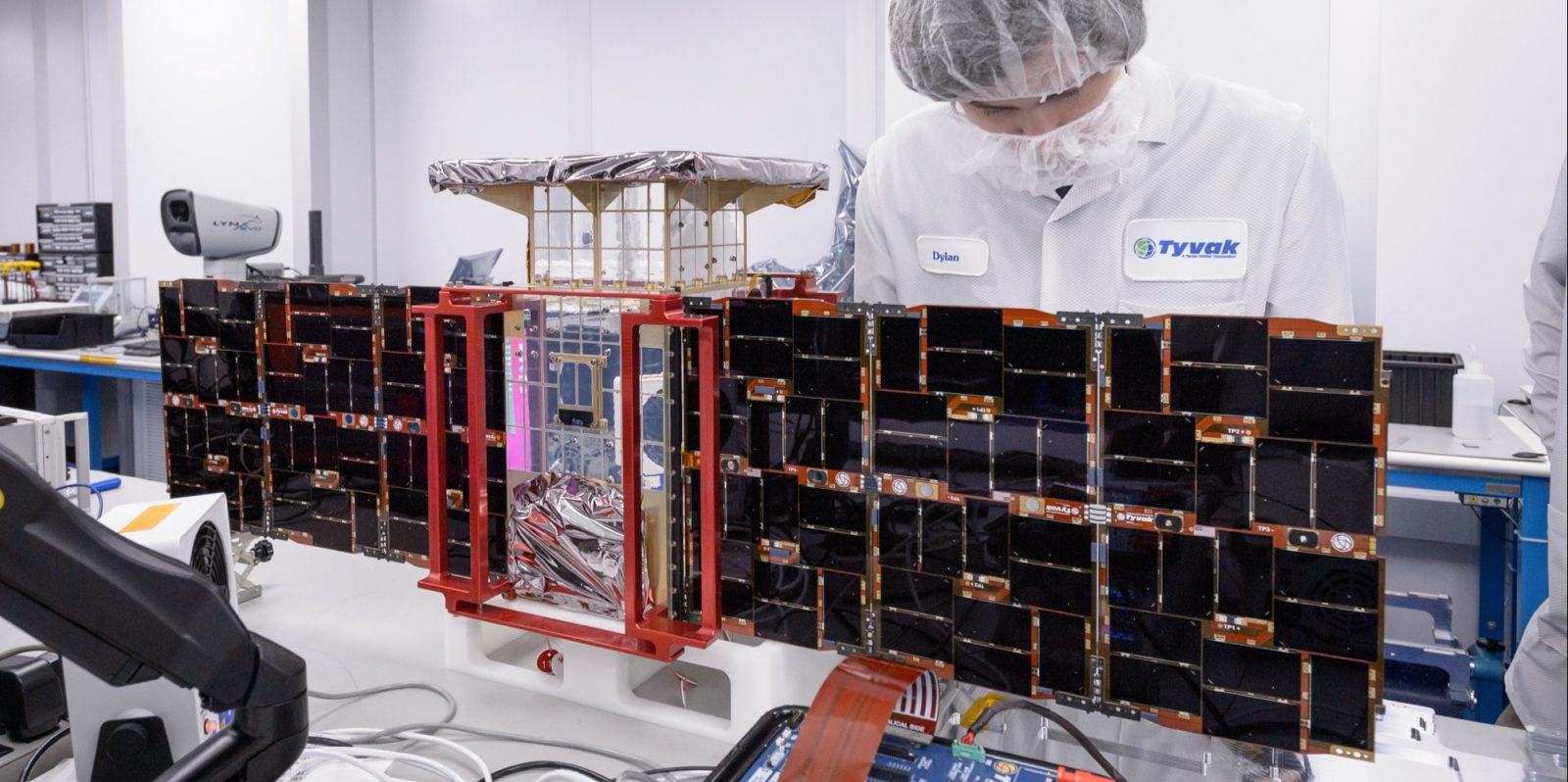
CubeSats began as a simple idea: standardize a tiny satellite so anyone could build one and share a rocket. The basic “1U” block is a 10 -centimeter cube. Larger variants – 2U, 3U, 6U, 12U, even 16U – snap together like Legos.
The design came with a crucial accessory: a spring-loaded deployer that made CubeSats compatible with many rockets. Rather than designing custom hardware for every payload, launchers now use standardized pods that gently push each satellite away from the upper stage when commanded.
That change unlocked a revolution. A CubeSat can ride to space in the same deployer design used by universities, startups, or space agencies. The International Space Station even acts as a launch site, using Japan’s Kibo module to release clusters of CubeSats through its airlock – a slow-motion ballet of miniature satellites floating free against Earth’s curve.

Launch service providers love CubeSats because they turn unused mass and volume into paying payloads. SpaceX’s rideshare program turned that into a rhythm, with regular Transporter and Bandwagon missions that deploy dozens of small spacecraft per flight.
Aggregators such as Exolaunch bolt on multi-port adapters and manage clusters of clients, so one rocket can carry everything from weather sensors to AI-driven imagers. Rocket Lab, meanwhile, built its own deployers and even a “kick stage” that gives small satellites their final orbital push – a kind of space Uber that drops each passenger at the right altitude.
Inside those deployers, precision is everything. The CubeSats are stacked and latched like drawers in a cabinet, each with its own release spring calibrated to centimeters per second of separation speed. When the command comes, the door opens, the spring pushes, and the satellite drifts away without colliding with its neighbors.
Most CubeSats accept whatever orbit their rideshare provides – typically a 500-kilometer sun-synchronous path ideal for daily, same-lighting imagery. But new “space tugs” now give them freedom. Vehicles like D-Orbit’s ION and Momentus’s Vigoride ferry CubeSats from a shared drop-off to custom orbits, deploy them one by one, and even host experiments before releasing anything.
Once free, each CubeSat orients itself using a tiny attitude control system that includes star trackers, reaction wheels, magnetorquers, and sun sensors, which are all packed into a volume smaller than a coffee mug. Those components give them precise pointing, often within a few arcminutes – enough for high-resolution imaging or formation flight. Many now include propulsion: cold-gas thrusters for short burns, electric or iodine ion thrusters for long-term maneuvering, and even autonomous collision-avoidance capabilities.
From those small beginnings, the missions have become big. Planet’s global fleet of 3U and 6U satellites images the entire Earth every day with meter-scale resolution. Spire’s constellation listens to GPS signals refracted through Earth’s atmosphere to deliver global weather data. NASA’s CAPSTONE CubeSat proved navigation in a near-rectilinear halo orbit around the Moon – the planned location for the agency’s upcoming Lunar Gateway.
Others are headed even farther, demonstrating communications, imaging, and propulsion in deep space.
The companies behind them read like a NewSpace directory: NanoAvionics, AAC Clyde Space, GomSpace, and EnduroSat build the spacecraft; Exolaunch, D-Orbit, and Rocket Lab handle deployment and transport. Planet and Spire run massive operational fleets that turn small satellites into global services. Together they’ve reshaped launch economics, reducing the barrier to orbit from tens of millions to a few hundred thousand dollars.
Today, the term “CubeSat” describes much more than a shape. It represents an ecosystem: standardized deployers, shared rockets, precision guidance, and powerful analytics that make space accessible to nearly anyone with an idea and a modest budget. These miniature machines have become the connective tissue of modern spaceflight, proof the biggest changes sometimes come in the smallest packages.
FTC: We use income earning auto affiliate links. More.



Comments